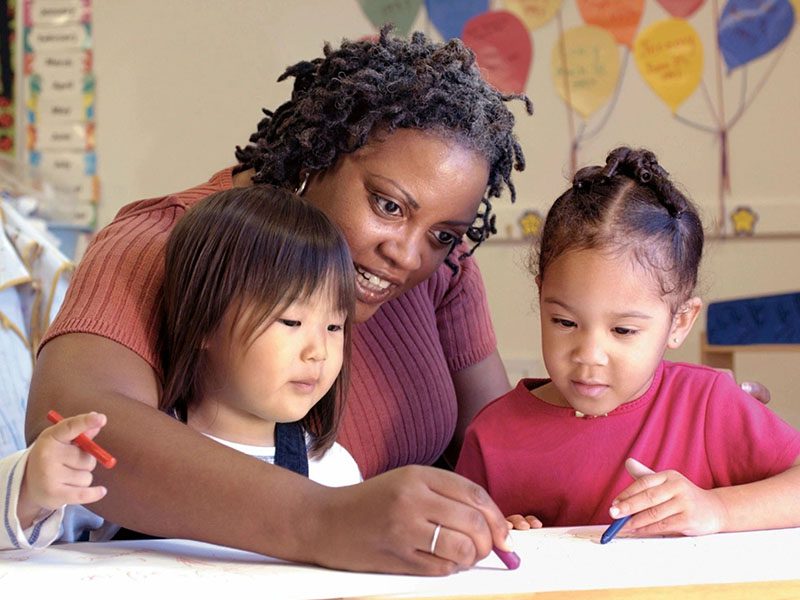
Alphabet Knowledge: Learning Letter Names and Sounds
Alphabet knowledge is exhibited when the individual can automatically recognize the name and common sound for all 26 letters of the alphabet, in upper and lower case. A corollary skill is the ability to write each letter, again, in upper and lower case. Children tend to learn letter names before they learn letter sounds (Mason, 1990; Worden & Boettcher, 1990). The common sound is the pronunciation the letter most often makes in words. For some letters the common sound may occur nearly as often as do alternate sounds.
In learning alphabet sounds, the ease at which a sound is learned depends on 1) where the sound is located in the letter’s name, and 2) letters with more than one mapping such as /a/ that can be pronounced as /ā/ or /ă/. Letters with multiple sounds can be more difficult to learn.
For example, the name for the letter /t/ contains two phonemes and is pronounced as /t-ee/. In this case, the sound of the letter is found in the initial position of its name, making it easier to learn. On the hand, for the letter /f/ the sound is in its name but it is at the end of the name (eh-f), making it more difficult to distinguish. More extreme is the pronunciation of the letter /h/ which does not contain its sound (ā-ch) at all, making it still more difficult to learn.
Treiman et al. (1998) state that children try to understand the association between letters and sounds by making sense of what they know about a letter name and its sound. Although paired associate learning (PAL) may suggest that quizzing students on letter name and sound knowledge using flashcards may be reasonable, how children actually connect the two is much more complex.
Finally, the rather than being entities that are learned individually, alphabet knowledge, phonemic awareness, and letter-sound-knowledge are very much linked. The interactivity of these three processes are what I term the “Decoding Triangle.”
Mason, J. M. (1980). When do children begin to read: An exploration of four-year old children’s letter and word reading comprehension. Reading Research Quarterly, 58, 134-159. 805-812.
McBride-Chang, C. (1999). The ABC’s of the ABC’s: The development of letter-name and letter-sound knowledge. Merrill-Palmer Quarterly, 45(2), 285-308.
Treiman, R., Tincuff, R., Rodriquez, K., Mouzaki, A., & Francis, D. J. (1998). The foundations of literacy: Learning the sounds of letters. Child Development, 69(6), 1524-1540.
Worden, P. E., & Boettcher, W. (1990). Young children’s acquisition of alphabet knowledge. Journal of Reading Behavior, 22, 277-295.
